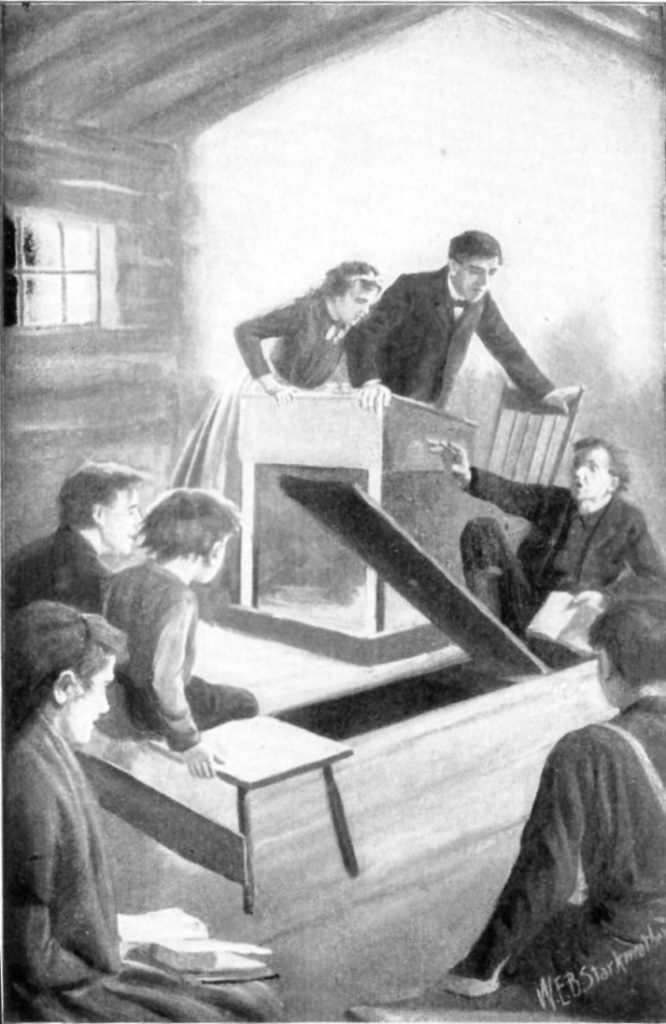
The Hoosier Schoolmaster: A Story of Backwoods Life In Indiana by Edward Eggleston was published in 1871 and is set twenty years earlier. It was a hit in its day primarily for its novel use of local dialect–Eggleston complains of writers before him using New England rural colloquialisms for backwoods characters that were supposed to be Hoosiers or even southerners. For instance, people in Indiana never used a “pail”. They used a “bucket”. They never “pare” apples but “peel” them. (These continue into the present day, at least for my family.) Today, the book is read for things like this and because it accurately represents rural Indiana life at that time.
Many readers will know that The Hoosier Schoolmaster is set far away from Clinton County, in southern Indiana near the Ohio river. But the Clinton County area nonetheless makes a kind of appearance in a story told by an old, witch-like peddler of folk remedies:
“Many’s the case I’ve cured with yarbs and things. Nigh upon twenty year ago they was a man lived over on Wild Cat Run as had a breakin’-out on his side. ‘Twas the left side, jes below the waist. Doctor couldn’t do nothin’. ‘Twas Doctor Peacham. He never would have nothin’ to do with ‘ole woman’s cures.’ Well, the man was goin’ to die. Everybody seed that. And they come a-drivin’ away over here all the way from the Wild Cat. Think of that air! I never was so flustered. But as soon as I laid eyes on that air man, I says, says I, that air man, says I, has got the shingles, says I. I know’d the minute I seed it. And if they’d gone clean around, nothing could a saved him. I says, says I, git me a black cat. So I jist killed a black cat, and let the blood run all over the swellin’. I tell you, doctor, they’s nothin’ like it. That man was well in a month.”
– The Hoosier Schoolmaster, page 120
If you have never read The Hoosier Schoolmaster, I recommend it. It does not have deathless prose or the most compelling plot, but it does have amusing characters drawn from close observation in life, and more importantly it is full of great details about how ordinary Hoosiers lived and thought at that time. It does have some preaching and some lecturing and is obviously written by someone who does not quite know what he is doing, but it is always enjoyable and is wonderfully short.
You can read it for free (with pictures) at Project Gutenberg, which is a terrific website full of public domain books, or at Indiana University’s Indiana Authors page. And of course it will be at your local library.
